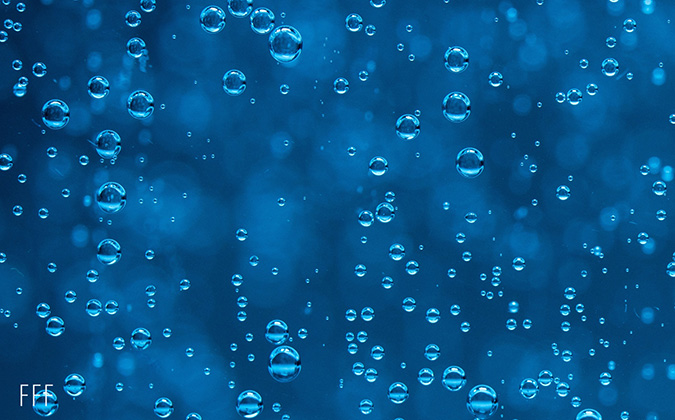
Managing health risks in Mediterranean aquaculture’s least-controllable environment
The consolidation of Mediterranean aquaculture is standardizing production practices in the region and leading to better biosecurity management, but growing out fish in the unforgiving environment at sea poses the sort of challenge that demands realistic, practical solutions.
That’s according to Francesc Padros, PhD, an aquatic-animal health specialist from Universitat Autònoma de Barcelona.
“Honestly, I think when talking about cages in the Mediterranean, the word biosecurity is an oxymoron. I prefer bioremediation, because in the cages, it’s very difficult to apply the concept of biosecurity. It’s completely opposite, for example, to hatcheries or flow-through systems where you can have much more control,” he said.
“It’s a very harsh environment, with no barriers. The cages are in the middle of a scenario full of pathogens and routes of transmission. Some producers are also receiving fry from different hatcheries, with different biosecurity levels.”
Scaling up brings streamlined approaches
Things are changing, however, and Padros believes this is largely due to the structure of companies operating in the region. While things are still very different from the consolidated and highly regulated market for Atlantic salmon in Norway, he said, there has been an increase in larger operators, which have standardized practices in regard to health management, as well as the sourcing and movement of fish.
One improvement with the larger firms is internal control of hatcheries and nurseries, meaning they are sited closer to where cages are situated. Rather than requiring fish to be transported in lorries over hundreds or sometimes thousands of kilometers, now they are moved using company boats.
“This is better in terms of welfare but also in quality, as they can produce bigger batches, as they have much more control over the stocks. They can produce single stocks, which is always much better than mixing stocks from different places. That is really a big problem from the point of view of both health and potential pathogens,” he noted.
Vaccination’s essential role
Increasing the resilience of fish through vaccination before they are moved to cages is another central pillar of standardized approaches. Commercial vaccines are available for a number of the major bacterial and viral pathogens affecting Mediterranean aquaculture, while for emerging pathogens, autogenous vaccines are also sometimes used.
“The companies are totally convinced that without vaccination, they cannot move forward. As I say, biosecurity is very difficult to implement, so the only way to have decent results on production without too much impact from disease burden is improving the resilience of the fish,” he said.
When emerging diseases become prevalent, there are also key differences between approaches in the Mediterranean as compared to salmon-producing countries.
Multiple countries, both EU and non-EU, are involved in Mediterranean finfish farming, without unified fish-health management strategies. This sits in contrast with other farmed species like salmon, with large productions based in a single country like Norway. Until recently, Padros explained, Mediterranean producers were not large enough to have research and development capacity to work on their own solutions or reach out for collaborative work with pharmaceutical companies. Now, with the emergence of larger players in the market, this has become possible.
Projects advance knowledge, connections
Padros has been involved in a number of EU-funded projects improving knowledge around controlling parasites and pathogens in Mediterranean aquaculture.
The projects with more applied scientific focus stand out, he said, where industry was involved right from the start and representation comes from across the region. Successes included streamlining therapeutic strategies for seabass and sea bream, working on new vaccine options against bacteria and viruses, and identifying genetic markers for robustness against pathogens such as Betanodavirus, which causes viral nervous necrosis, and Vibrio harveyi.
While involving competitors in exploring shared issues marked progress, he still believes that, despite a great increase in scientific work, there remains a lack of a “bridge” between scientists and fish farms. The latest work supported by the EU aims to address that, featuring different packages of work, including vaccines, diagnostics and detection. A key element is focusing on improving stock assessments in cages.
“It is still difficult to know exactly how many fish are in each cage at each moment. I think to better control fish health, it is very important to have this knowledge about stocks,” he noted.
The potential biosecurity benefits of using bacteriophage therapies, while reducing chemical treatments in hatcheries, is another focus for the many aquatic-health experts working on these European projects. For this, representatives of the European Medicines Agency and other stakeholders are involved in an advisory role, he explained.
Fundamental change may be coming
A bigger endeavor still is the upcoming Partnership on Animal Health and Welfare, a 10-year project due to start in 2024 and featuring a dedicated biosecurity strand of work. The focus is expected to look in detail at the fundamental principles of production in European aquaculture, Padros explained, and how the costs of structural change, such as an increased move toward recirculating aquaculture systems, weigh up against the risks of damaging disease and parasite outbreaks.
The Mediterranean remains some distance behind the salmon and tilapia industries in potential to make a shift to inland facilities for growing out fish, he continued, but that is not to say there won’t be such a move over the coming years.
“If you want. you can improve the biosecurity. That technology is already there, but you need to have a long-term perspective of, say, 10 to 15 years to commit to the investment and apply it,” he said.
What is required is “logical and reasonable strategies” that make sense to companies operating in the region, he stressed, but first, there remains that problem of connecting aquaculture’s different types of expertise.
“Ultimately, there is still work to do to be able to create that connection between science and industry, because sometimes they are completely separate roles,” he added.
Posted on: September 06, 2023






